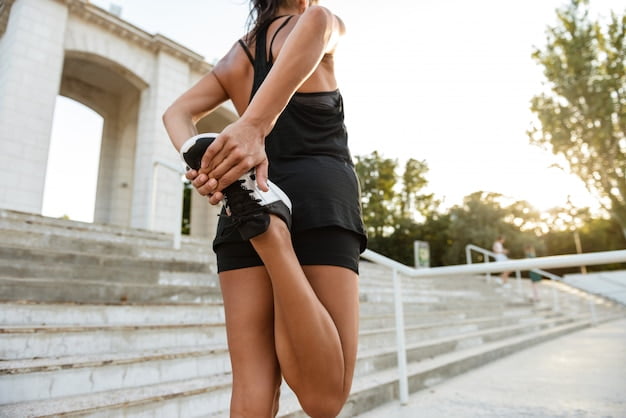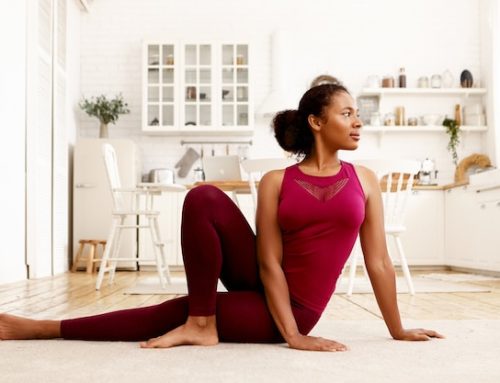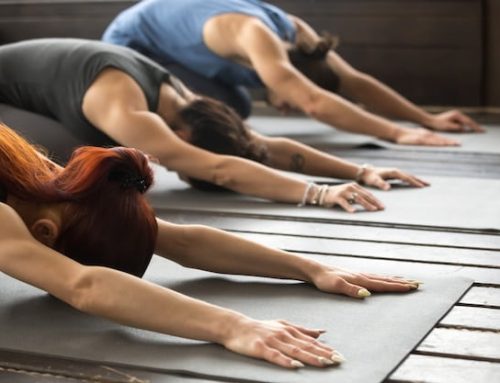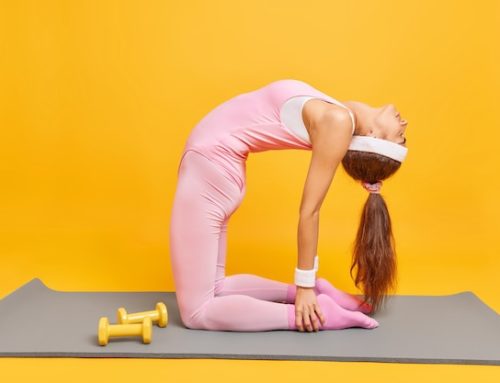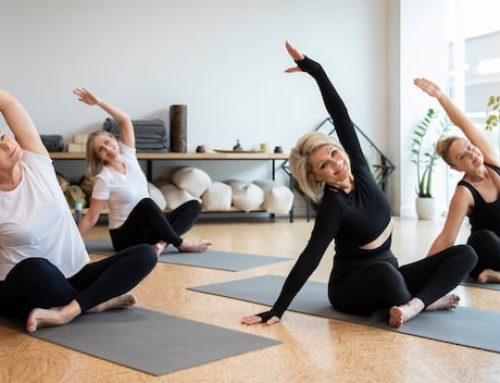Stretching exercises – what is worth knowing about them?
Stretching exercises (stretching) play an important role in training at both competitive and amateur levels. Sometimes they are just a warm-up and sometimes they are a complete set of exercises. They keep muscles and joints flexible. Stretching exercises should be performed by all healthy people, including those with joint and muscle pain.
Stretching usually lasts 15 to 20 seconds and is performed before training as a warm-up. There are also full stretch workouts that include elements of Pilates, for example. Either way, it is advisable to perform stretching exercises also after your workout. The aim of stretching exercises is not to reduce weight, but to improve joint mobility. There are two types of stretching exercises, namely dynamic stretching and static stretching.
What is dynamic stretching?
It involves stretching muscles and ligaments that have not previously been warmed up. It is performed before physical exercise – the muscle must be stretched quickly and returned to its natural position. Unlike stretch stretching, the limbs are moved in different planes so that they reach their maximum range of movement. As a result, the muscles become more flexible, fitter and more efficient.
Stretching exercises such as dynamic stretching increase joint mobility. As a result, the risk of injury during training is minimised and, in addition, the exercises themselves are performed more efficiently. It can help prevent, for example, Achilles tendon injuries or strains, and at the same time dilate the blood vessels – this will ensure that the muscles are supplied with oxygen.
The following exercises are most commonly used during dynamic stretching:
- leg and arm extensions,
- Type A, B, C skips,
- leg rotations at the hips, ankles and knees,
- dynamic bends,
- trunk twists,
- wide-legged squats.
What is static stretching?
It is a stretching exercise that involves stretching muscles that are at rest. During static stretching, you isolate a particular muscle group and hold it in that position for a certain period of time. The training helps to relax the body and makes the muscles rest and recover faster. Stability stretching is often chosen by people with postural defects.
There are two types of static stretching – passive and active. The first consists of performing the movement until the limb is stretched painlessly. In the second type of stretch, with the help of antagonistic muscle tension, the body is stretched and held in that position. Regardless of which type of stretching is used, it is advisable to always perform it after a workout.
Static stretching exercises should last between 15 and 20 minutes. It is recommended that 5 to 8 exercises are performed (10 repetitions each). At the beginning of each exercise, the muscle should be stretched for 15-30 seconds at a time and care should be taken not to cause pain – otherwise the tissues may tear.
The Benefits of Stretching
Stretching is an excellent way to improve flexibility and mobility, reduce muscle tension, and enhance overall physical performance. It is an essential part of any fitness routine and can help individuals prevent injury while improving their athletic ability. Regular stretching can also help individuals relax and de-stress, making it an excellent way to improve mental health. However, some people may wonder if stretching can also help them slim their waist.
The Relationship Between Stretching and Weight Loss
Stretching is a great way to improve flexibility, reduce tension in muscles, and prevent injuries. However, stretching alone is not a sufficient method for weight loss.
Weight loss occurs when there is a calorie deficit, meaning you burn more calories than you consume. This can be achieved through a combination of healthy eating habits and physical activity. While stretching can be part of a physical activity routine, it does not burn a significant amount of calories on its own.
That being said, stretching can indirectly support weight loss efforts. By improving flexibility and mobility, stretching can help to make other physical activities easier and more enjoyable, leading to increased calorie burn and potentially more consistent exercise habits. Additionally, stretching can help to reduce stress levels, which can impact eating habits and overall wellbeing.
Overall, while stretching is a valuable addition to any fitness routine, it is not a direct contributor to weight loss. However, incorporating stretching into a well-rounded exercise plan can support overall physical and mental health, potentially leading to better weight management. While stretching has numerous health benefits, it is not a direct way to lose weight. Stretching helps the body to become more flexible, but it does not burn a significant number of calories. Therefore, it is not an effective way to lose weight solely through stretching. However, regular stretching can help to improve posture and make an individual appear more toned and lean. Improving posture can also help the abdominal muscles to appear tighter and flatter, which could create the illusion of a slimmer waistline.
The Importance of a Comprehensive Fitness Routine
While stretching is a valuable part of any fitness routine, it is essential to remember that it is only one component of a comprehensive workout plan. To lose weight and slim the waistline, individuals must engage in regular physical activity, such as cardio and strength training exercises. These types of workouts help to burn calories and build muscle, which are both essential for weight loss and creating a more toned appearance.
Stretching Exercises for a Slimmer Waistline
While stretching alone cannot slim the waistline, incorporating specific stretching exercises into a comprehensive fitness routine can help to improve posture and create the appearance of a slimmer waistline.
Stretching exercises alone will not result in a slimmer waistline, as spot reduction is not possible. However, incorporating stretching exercises into a well-rounded exercise and healthy eating plan can help to improve flexibility, posture, and core strength, which can contribute to a leaner-looking waistline.
Here are some stretching exercises that can help to target the muscles in the waist and abdomen:
- Seated spinal twist: Sit on the floor with your legs extended in front of you. Bend your right knee and place your foot on the outside of your left knee. Twist your torso to the right and place your left elbow on the outside of your right knee. Hold the stretch for 30 seconds and repeat on the other side.
- Standing side stretch: Stand with your feet hip-width apart. Raise your left arm straight up and lean to the right, reaching your right arm down towards your right knee. Hold the stretch for 30 seconds and repeat on the other side.
- Cobra stretch: Lie face down on the floor with your hands underneath your shoulders. Push up with your arms, lifting your chest off the ground and keeping your hips and legs on the floor. Hold the stretch for 30 seconds.
- Child’s pose: Start on your hands and knees, then lower your hips back towards your heels while reaching your arms forward. Rest your forehead on the ground and hold the stretch for 30 seconds.
- Plank: Start in a push-up position, then lower down onto your forearms. Keep your body in a straight line from your head to your heels. Hold the position for 30 seconds, working up to longer holds as you get stronger.
Remember to focus on deep breathing and engage your core muscles throughout each stretch. Stretching exercises can help to improve your overall flexibility and core strength, which can contribute to a slimmer-looking waistline over time when combined with a healthy diet and regular exercise.
The following stretching exercises can be helpful for individuals looking to tone their midsection:
| Stretching Exercise | Description |
|---|---|
| Standing Side Stretch | Stand with feet hip-width apart and raise one arm overhead. Lean towards the opposite side and hold the stretch for 15-30 seconds before switching sides. |
| Seated Forward Fold | Sit on the floor with legs extended in front of you. Reach forward and try to touch your toes while keeping your back straight. Hold the stretch for 15-30 seconds. |
| Cat-Cow Stretch | Start on all fours with hands under shoulders and knees under hips. Arch your back and tuck your chin towards your chest (the cat stretch). Then lower your back and lift your head towards the ceiling (the cow stretch). Repeat 5-10 times. |
| Child’s Pose | Kneel on the floor and sit back on your heels. Reach your arms forward and rest your forehead on the ground. Hold the stretch for 15-30 seconds. |
Conclusion
While stretching alone cannot slim the waistline, incorporating specific stretching exercises into a comprehensive fitness routine can help to improve posture and create the appearance of a slimmer waistline. Individuals looking to lose weight and tone their midsection should engage in regular physical activity, such as cardio and strength training exercises, in addition to stretching. By combining stretching with other types of workouts, individuals can achieve their fitness goals and improve their overall health and well-being.
